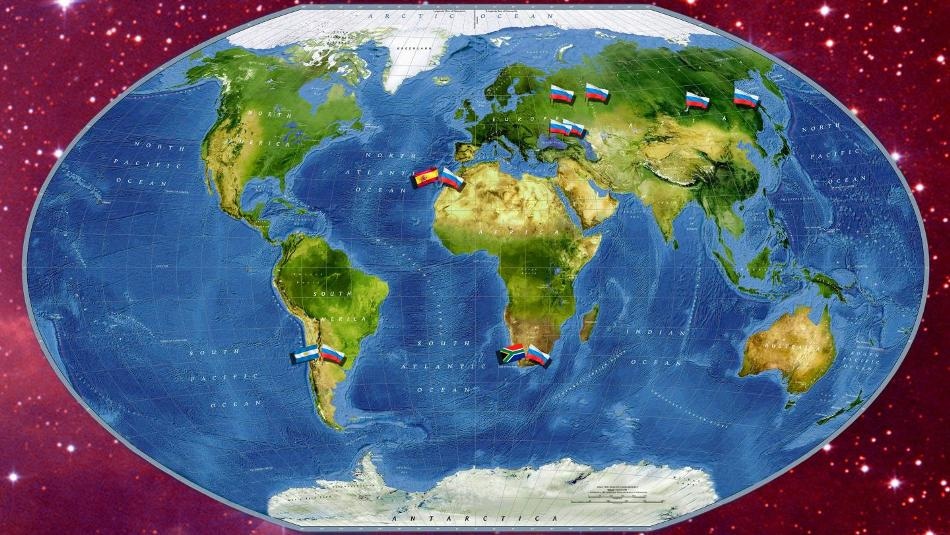Aug 2 2017
NASA’s Fermi Gamma-ray Space Telescope in the United States recorded a gamma-ray burst on the 25th June, 2016 at 22:40:16 GMT. Subsequently this proved to be merely a giant burst precursor.
Within a time period of 31 seconds, the Russian robotic telescope from the Global MASTER net of the Lomonosov Moscow State University, positioned in the Canary Islands—the Observatory of the Instituto de Astrofísica de Canarias, Tenerife, Spain—obtained Fermi’s news. Within the next 26 seconds, it started to scan square errors by using optical cameras.
 This is the Global MASTER Space Monitoring Net at the Lomonosov Moscow State University. CREDIT: Vladimir Lipunov.
This is the Global MASTER Space Monitoring Net at the Lomonosov Moscow State University. CREDIT: Vladimir Lipunov.
Although initially there were substantial errors in the gamma-ray burst’s initial coordinates, the complete square errors were detected by the extra-wide optical field cameras of MASTER-SHOCK (a terrestrial equivalent of SHOCK cameras) installed at the Lomonosov Space Observatory. In light of this, MASTER observed the region of interest even before NASA’s Space Observatory recorded the event with high coordinate precision 131 seconds after receiving the first message.
At present, an innovative Global Net Center—the Crimean Taurida-MASTER of the Lomonosov Moscow State University—has been integrated with the Canaries’ MASTER. During the occurrence of the event, this center was functioning in test mode. Taurida-MASTER recorded the initial frames at 22:44:30 hours, that is, within 12 seconds of receiving the refined coordinates.
The principal task was the observation of intrinsic optical radiation polarization during the gamma-ray bursts, where intrinsic radiation is optical radiation, surfacing in coordination with gamma ray radiation. Detection of the intrinsic optical radiation is one of the most complex tasks of modern experimental astrophysics. This is because it necessitates absolute robotization of not only the detection operation but also the original structure of the telescope.
Consequently, MASTER was able to record the entire occurrence of the burst at the ideal time resolution and for the first time could also record optical radiation polarization during a gamma-ray burst at the time when the burst was still occurring.
GRB160625B gamma-ray burst was noted to be the most spectacular space burst that occurred within a narrow stream of relativistic particles, the speed of which was increased due to the electromagnetic field of a swiftly rotating black hole, occurring absolutely in front of us in some other part of the Universe.
Detected polarization of intrinsic optical radiation has revealed that the vent of the most powerful space cannon is developed by ordered powerful magnetic field, formed by the emerging black hole.
Vladimir Lipunov, Doctor of Physics and Mathematics, Head of Space Monitoring Laboratory at the Sternberg Astronomical Institute, MASTER Project Supervisor and Professor at the Astronomy Division of the Faculty of Physics, Lomonosov Moscow State University
Fifteen years ago, in the spring of 2002, a research team from the Lomonosov Moscow State University headed by Professor Vladimir Lipunov and funded by Optika Moscow Association initiated the elaboration of a first Russian entirely robotic telescope, namely, MASTER. Their aim was to detect the most spectacular but brief bursts in the Universe, or gamma-ray bursts, which normally persisted for more than multiples of 10 seconds. Initial surveys had been already carried out in Autumn 2002. However, for the next 6 years, the Researchers could record just two gamma-ray bursts.
The collaboration among Researchers from various countries was the reason behind the higher success rate of this expansive astrophysical investigation. The Researchers elaborated distinctive robotic apparatuses in infrared radiation, gamma rays, and in the world’s only Global MASTER optical robotic telescopes search Net, instituted within the configuration of the development program of the Lomonosov Moscow State University with assistance from Optika Moscow Association.
Most of the Authors of the article, eight Authors, were Russian Researchers. The study was performed in cooperation with Scientists from RSA, Great Britain, Spain, Israel, USA, Italy, Mexico and Australia.
At present, eight MASTER robotic observatories have been instituted in four continents in the Northern as well as Southern hemispheres. Global MASTER Net has turned out to be a pioneer in early optical observations of gamma-ray bursts in the Universe. Apart from that, MASTER has recorded over 1000 burst occurrences in the Universe, and has also determinedly contributed to optical probing for the origin of the first gravitational wave burst, observed by LIGO (United States).
In addition, it works in collaboration with large neutrino facilities such as ICECube in United States and ANTARES in France. Concurrently, Global MASTER Net has detected eight possibly dangerous asteroids.
Recording polarization of optical radiation during gamma-ray burst is a significant scientific accomplishment, which has been the goal of the MASTER team for 15 long years from the start of the program. Furthermore, it is also a proof of the exceptional quality of Russian scientific technologies, perfected with the cooperation from the Lomonosov Moscow State University Researchers and private sector, conferred by OAO Optika Moscow Association.
Distinctive mathematical assistance—formulated by Russian Researchers—can be applied to solve fundamental as well as application research tasks such as space debris observation, space threats and near-space monitoring.